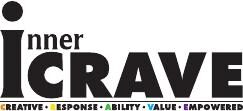
“The greatest problem with communication is the illusion that it has been accomplished.” –George Shaw
The secret ingredient in the recipe for success of many outstanding people is that they learned to master the art of communication.
The art of unspoken language is a key to skillful communication.
- Developing a keen sensitivity to the nonverbal signals of others can make all the difference in our relationships.
Develop the art of listening to help you identify the real needs and feelings of those around you, and your interactions will be more successful.
The art of conversation is a lot like painting. As you gain confidence in conversation, you’ll begin to experiment with new techniques, words, and ideas.
Don’t forget to practice the art of self-talk!
- Successful communication really begins with the most important conversation you’ll have today, the conversation you have with yourself.
- Understanding this will allow you to feel better about yourself and hence to enjoy more meaningful relationships with those around you.

Re-source: Reprogram
Relationships can be a source of your greatest joy or your deepest heartbreak. The art of problem-solving will allow you to develop harmonious, loving relationships that will be your greatest joy.
Neuro-Linguistic Programming (NLP): Three principles
- The power of goals- One of the key tenets of NLP is that the more specifically we define what we want, the more likely our “programmed” minds will create an environment to satisfy those desires.
- If you don’t know where you’re going you’re not going to like where you end up.
- How do you eat an elephant? One bit at a time.
- Building Rapport
- Mirror a person, and he will unconsciously feel more connected with you.
- Understanding representational systems
- There are five representational systems, though the first three are the most commonly used: visual (sight), auditory (hearing), kinesthetic (touch), olfactory (smell), and gustatory (taste).
- Sight: “Can you see what I mean?”
- Hearing: “Do you hear what I’m saying?”
- Touch: Can you grasp what I’m talking about?”
- There are five representational systems, though the first three are the most commonly used: visual (sight), auditory (hearing), kinesthetic (touch), olfactory (smell), and gustatory (taste).
craving and resource from “Am I Making Myself Clear?” by Terry Felber

